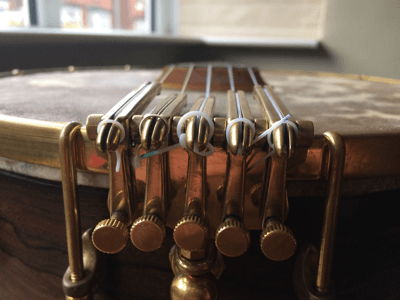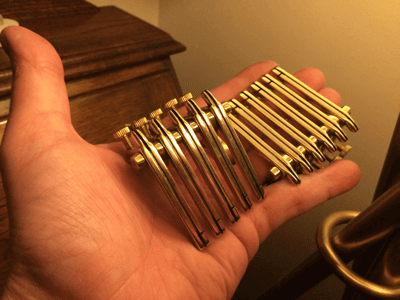The Oettinger Tailpiece Resource
Introduction
Most people know that a banjo is one of the most adjustable musical instruments around, because parts can be so easily replaced. Strings, bridges and heads all play a part in sound and substitutions are frequently made.
Improving the Sound of a Banjo
 One of the biggest improvements, one that is sometimes overlooked, can be made with a better, more adjustable tailpiece.
One of the biggest improvements, one that is sometimes overlooked, can be made with a better, more adjustable tailpiece.
Few tailpieces are as adjustable as the Oettinger and none that are, look better. In the picture to the right you can see a typical set up that works in most situations. The downward pressure on the 3rd and 4th strings has been increased and the downward pressure on the 1st, 2nd and 5th strings has been reduced. This will quieten down the 'trebles' and bring out the 'basses' a bit more.
Oettinger Tailpiece Information
 In the early 1920s an American named Mark A. Oettinger came up with a design that allowed the downward pressure of individual strings to be adjusted. It was both beautiful and functional and it has, over the years, become iconic. Some consider it the ultimate piece of banjo bling.
In the early 1920s an American named Mark A. Oettinger came up with a design that allowed the downward pressure of individual strings to be adjusted. It was both beautiful and functional and it has, over the years, become iconic. Some consider it the ultimate piece of banjo bling.
Original Oettinger tailpieces can command prices of over $500!
There have been several copies made over the years, some better than others. This site is dedicated to Oettinger tailpieces that adhere faithfully to the original design: cast metal, not machined from plate or bar and very similar to the original shape.
On this resource you can see examples of this legendary banjo tailpiece. Read about its history and find out where to look for examples to buy. Most importantly, you can learn how to set the tailpiece up to the get the best sound possible out of your banjo.
